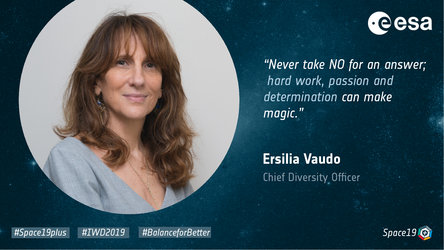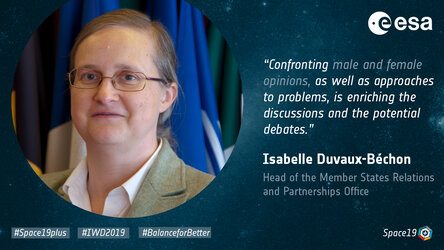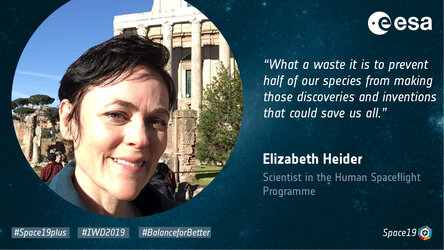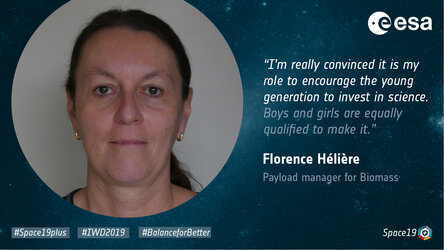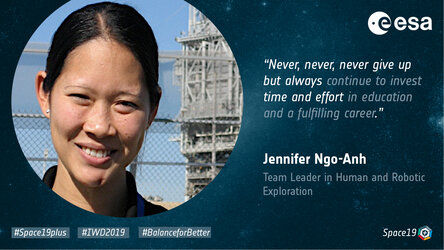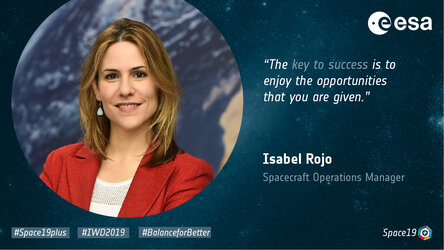Marta Ferraz, Scientist, ESA Robotics Exploration
Please give a brief description of your duties at ESA.
I have been a scientist at ESA – ESTEC in the Netherlands – for almost two years now. As a neuroscientist and roboticist, I’m trying to understand how robots can help humans explore space. I am also trying to find a perfect symbiosis between human and machine. The latter aims to facilitate human adaptation to space environments, while pushing the boundaries of the human biological condition. In my view, there are three main goals associated with human space exploration: 1) survival in a universe in constant mutation; 2) to generate new human evolutionary states; and 3) to create new ways to perceive universal properties due to changes in the human biological condition – caused by exposure to extreme environmental conditions.
What inspired you to pursue a career in science and engineering and what motivated you to join ESA specifically?
Since I can remember, I have always questioned my place in the universe. Who are we? Where are we? Why are we here? I’m curious by nature and I don’t take natural phenomena for granted. I consider myself to be an exploratory being. Science and art — I’m also a painter — allow me to analyse and reconstruct reality in varied and unexpected ways. Science has been, and will always be, an exploratory process for me, accompanied by a profound sense of responsibility for all the life forms that exist on this fragile planet.
Did you encounter gender barriers on your way to becoming a scientist / engineer?
No. We may choose not to be a victim of oppressive behaviour. Day-to-day life is, by nature, a struggle. If we decide to be true to ourselves, we will always have the option to determine our life path. Barriers express themselves in diverse ways. Concerning gender: oppression manifests itself not only in one direction – male to female – but also in the opposite way. Human nature is a complex phenomenon; for example, different animals express cognition in distinctive ways. There are even differences between genders in the way the brain behaves. In the future, we may come to understand that diversity is the pathway to all the universal challenges that will be imposed on us. I believe human beings spend too much time focused on frivolous things, time that could be used more wisely to overcome relevant problems that may imply creative solutions for human survival. In order to face a universe with emerging challenges, we need to evolve in our current biological/cognitive timescale, and rip ourselves out of this ‘mundane bubble’ that we built for ourselves and that confines our existence to deterministic scenarios.
What progress have you seen in addressing the gender imbalance in your profession through equal-opportunity measures in recent years?
In my view, professional imbalance is not only confined to gender issues. Professional imbalance is a human inability to deal with differences, respect those differences and learn from them. Unfortunately, many institutions don’t provide opportunities for workers to express or defend themselves, for example, by having ethics commissions that protect workers’ rights. I believe that oppressive institutions will not have a place in future society. They will simply vanish if oppressed workers aren’t able to express their ingenious talent in order to respond to the highly competitive and creative society of the future.
What are, in your view, three measures that could make a difference in supporting a work-life balance and at the same time equal career opportunities.
The first measure is for humans to understand that they have to be courageous and stand for their rights and beliefs, even when facing difficult moments. This is the first and most important step to overcome an oppressive society. As previously mentioned, ethics commissions that protect workers’ rights would help. In addition, I believe that every worker should be evaluated inside an institution – not only the learner or apprentice but also those who are high up in the hierarchy. It is clear that external institutions must do such evaluations in order to grant neutrality to the process.
What advice would you give to a girl or young woman who is considering a career in science and engineering?
A dazzling path emerges for those who believe in themselves.



